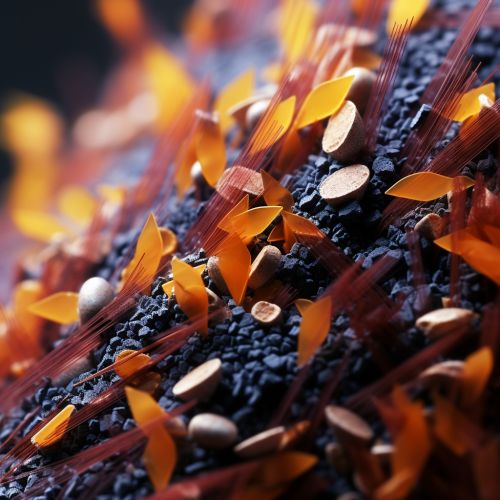Pet dander
Introduction
Pet dander is a common allergen produced by domestic animals with fur or feathers. It is a microscopic material shed from animals, including pets such as cats, dogs, rodents, birds, and others. Pet dander is composed of tiny, even microscopic, flecks of skin shed by cats, dogs, rodents, birds and other animals with fur or feathers. These bits of skin can cause reactions in people who are specifically allergic to these triggers, leading to symptoms such as red eyes, eczema, or a nasal congestion. Allergies to pet dander are common, especially among individuals who have other allergies or asthma.
Composition of Pet Dander
Pet dander is composed of microscopic pieces of skin that are shed by animals with fur or feathers. The dander is made up of tiny, often microscopic, flecks of skin. These small particles can become airborne and, when inhaled, can lead to allergies. The proteins found in pet dander, urine, and saliva can cause an allergic reaction or aggravate asthma symptoms in some people.


Pet Dander Allergies
Allergies to pet dander are common and can lead to a variety of symptoms. These symptoms can range from mild, such as sneezing and runny nose, to severe, such as difficulty breathing and asthma attacks. Pet dander allergies are caused by the immune system's overreaction to proteins in the pet dander, saliva, or urine. This overreaction can result in inflammation of the nasal passages and lungs, leading to symptoms of an allergic reaction.
Symptoms
Symptoms of a pet dander allergy can vary from person to person, but they typically include:
- Sneezing
- Runny or stuffy nose
- Red, itchy or watery eyes
- Wheezing, coughing, tightness in the chest and shortness of breath
- Itching
- Rash or hives on the skin
Diagnosis
Diagnosis of a pet dander allergy is typically made through a combination of a patient's medical history, physical examination, and specific allergy tests. These tests may include a skin prick test, where small amounts of allergens are pricked into the skin and any reactions are observed, or a blood test to measure the amount of specific antibodies in the blood.
Treatment
Treatment for pet dander allergies can include avoidance measures, medications, and allergy shots (immunotherapy). Avoidance measures may include removing the pet from the home, cleaning the home thoroughly to remove dander, and avoiding close contact with the pet. Medications can help to control symptoms and may include antihistamines, decongestants, and corticosteroids. Immunotherapy involves regular injections of the allergen, with the aim of desensitizing the immune system to the allergen over time.
Impact on Health
While pet dander allergies can be uncomfortable and even debilitating for some people, they are not typically life-threatening. However, severe reactions can occur, particularly in those with asthma. In these cases, exposure to pet dander can trigger an asthma attack, which can be a serious and potentially life-threatening condition. Therefore, it is important for individuals with a known pet dander allergy to manage their condition and avoid exposure to pet dander as much as possible.
Prevention and Management
Prevention and management of pet dander allergies can involve a combination of avoidance measures, medical treatment, and in some cases, immunotherapy. It is often recommended that individuals with a pet dander allergy avoid keeping pets with fur or feathers in their home. Regular cleaning of the home, including vacuuming and dusting, can also help to reduce the amount of pet dander present.
Medical treatment can help to manage symptoms and may include over-the-counter or prescription medications such as antihistamines, decongestants, and corticosteroids. In some cases, immunotherapy may be recommended. This involves regular injections of the allergen, with the aim of desensitizing the immune system to the allergen over time.
